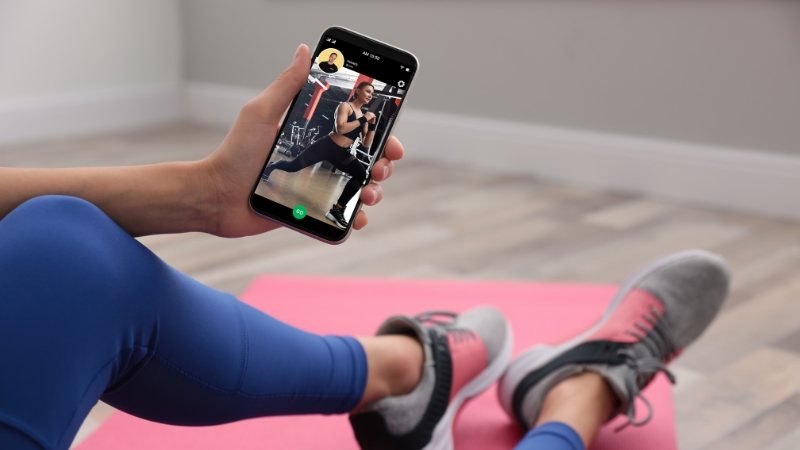
Share Post:
Opening a gym can feel thrilling, full of potential, and a personal vision. But it’s easy to overlook crucial steps when passion overtakes planning.
Many first-time gym owners stumble by ignoring practical business essentials.
Learning from those missteps can make the difference between barely surviving and running a strong, profitable gym that becomes a go-to hub in the community.
Table of Contents
Toggle1. Skipping Market Research Before Launch

Diving headfirst into gym ownership without first sizing up the playing field is like training without a warm-up. Many new owners assume people will show up because the gym has great equipment or modern decor.
But without proof of local demand, that can backfire.
Poor targeting, weak membership turnout, and mismatched offerings follow when market needs aren’t clear. A few simple steps can solve that.
Use findings to shape services that speak directly to what potential members want. Even something as niche as sourcing high-quality gym equipment in Adelaide should align with what people expect.
2. Neglecting Pre-Sales and Financial Planning

Starting a gym without cash in the bank is like lifting without warming up, risky, painful, and hard to recover from. The moment rent is due, staff expect pay, and utility bills pile up, you’ll wish financial planning came first.
Many new gym owners assume they can sell memberships fast enough after opening, but by then, the pressure has already set in.
Getting ahead of the stress begins with a solid pre-sale campaign. Sell memberships before the grand opening. Not only does it bring in revenue, but it also creates buzz and signals momentum in the community.
A strong pre-sale effort can fill classes, build early loyalty, and give your team real targets before day one.
A gym is a business, and any business needs a financial roadmap. Creating a realistic forecast is essential. Use honest numbers, not hopes.
Plan for the expenses you’ll face, plus a few that might surprise you. Smart financial planning means thinking about every category of expense and revenue.
Key financial areas to account for include:
- Fixed costs: rent, utilities, insurance, salaries
- Variable costs: equipment repairs, class instructors, events
- Marketing budget: paid ads, social media tools, print materials
- Unexpected costs: last-minute building fixes, legal paperwork, tech subscriptions
- Cash reserves: a 3–6 month emergency buffer for worst-case scenarios
3. Thinking Like a Trainer, Not a Business Owner

Loving fitness doesn’t guarantee success as a gym owner. Many enter the industry with coaching experience but little grasp of how to run a business.
Passion helps, but it can become a liability when it prevents owners from stepping into leadership.
Too much focus on workouts, equipment setups, and daily training leaves back-end operations ignored.
Payroll errors, overdue bills, weak branding, and inconsistent customer service often follow. A well-run class won’t fix broken systems behind the scenes.
Being a business owner means making time for high-level thinking, even if it feels uncomfortable or unfamiliar. Success requires structure, decision-making, and delegation.
Shift your mindset with these leadership practices:
Your role is to ensure that everything runs with purpose. Clients may notice the coaching, but the systems behind it keep them coming back.
Let go of the need to do everything personally and start designing a gym that runs efficiently with or without your constant presence.
Running a gym is not about being the hardest worker in the room—it’s about being the smartest operator in the business.
4. No Systems for Operations & Lead Management
Spreadsheets, memory, and handwritten notes are no match for running a modern gym. Without systems, your day gets eaten up by chaos.
Leads disappear, payments get missed, and members get frustrated with sloppy communication.
Growth cannot happen when operations feel like a guessing game. Manual processes introduce human error, inconsistency, and burnout.
Even with the best intentions, a lack of systems limits your ability to deliver a professional experience.
Time to automate and streamline.
Critical systems every gym should implement:
No member should go days without hearing from your gym after signing up. No lead should wait a week for someone to return a call or email.
Systems keep everyone on the same page, from front-desk staff to trainers to ownership.
Don’t settle for reacting to problems once they happen. Build processes that prevent them in the first place.
When systems work in the background, you can focus on growth and leadership instead of putting out fires.
5. Poor Member Onboarding and Retention Strategy
Attracting new members gets plenty of attention in most gyms, but what happens after someone signs up is just as critical.
Without a structured onboarding plan, new members feel confused, disengaged, and forgotten. That confusion turns into cancellations.
Joining a gym can be intimidating, especially for beginners. People need support, direction, and community in the early days.
Failing to deliver those basics creates churn, and churn kills momentum and eats into profits fast.
Effective onboarding strategies every gym should adopt:
Retention doesn’t happen by accident. It grows through connection. Gym owners who create engagement opportunities keep members longer and see more referrals.
Community events like themed workouts, small challenges, or social gatherings build relationships that keep people coming back.
6. Underpricing Services
Setting prices too low might seem like a fast way to attract members, but it often leads to bigger problems.
Many new gym owners fear charging too much and undervaluing their offerings as a result. That mistake limits their ability to grow, hire quality staff, or maintain equipment.
Low pricing not only reduces profit margins but also sends the wrong signal. Cheap rates make people question the quality of service.
When someone pays little, they often commit little.
Avoid pricing based on what competitors are charging or what feels “fair.” Use numbers.
Know exactly how much each membership tier needs to bring in to break even and turn a profit.
Steps to price strategically:
Tiered membership models provide flexibility and increase perceived value. Higher tiers can include personal training, nutrition coaching, or exclusive access to programs.
Add-ons create upsell opportunities without discounting your main offering.
7. Neglecting Marketing and Community Engagement
Waiting for people to find your gym is one of the fastest ways to stall growth.
Opening your doors is not enough. Without active promotion, even the most well-equipped gym gets overlooked.
New gym owners often assume word-of-mouth will carry everything or that a few posts on social media will do the trick.
But marketing needs to be consistent, strategic, and tied to actual outcomes. Visibility leads to leads, and leads, when nurtured, become members.
Marketing should start before your gym opens and continue every single week after. You’re not just selling access to equipment.
You’re inviting people into a lifestyle, a community, a place where they feel seen and supported.
Effective marketing strategies for gym owners:
- Multi-channel campaigns: Combine email, Instagram, Facebook, Google Ads, and flyers to reach varied demographics
- Content marketing: Share workout tips, transformation stories, member spotlights, and educational videos
- Seasonal promotions: Tie campaigns to events like New Year’s, summer prep, or back-to-school fitness resets
- Referral programs: Offer rewards to current members for bringing friends or family
- Partnerships: Collaborate with local health food stores, chiropractors, or massage therapists
It’s about building a culture. A gym that fosters connection will see more retention, more referrals, and more positive energy.
8. Failing to Track Results and Feedback
Without data, you’re flying blind. Many gym owners make decisions based on instincts, habits, or scattered feedback rather than real numbers.
That lack of clarity leads to missed revenue, unnecessary expenses, and member dissatisfaction.
Tracking performance is not optional. Every gym should know what’s working, what’s struggling, and what members actually think.
Start by identifying the core metrics that matter. These KPIs guide decisions, highlight weak spots, and help you plan ahead.
Key performance indicators (KPIs) every gym should track:
Numbers matter, but so does feedback. Members can highlight things that data misses, uncomfortable locker rooms, rude staff, and awkward class transitions.
Gathering their input shows respect and offers a clear path for better service.
The Bottom Line
@caleowen The hardest part about being a Gym owner is not the expenses, getting members or coming up with the best exercises The hardest part about being a Gym owner is getting out of our way and being open minded to learning things that we didn’t expect to have to learn Sales, marketing, content, and so many other things that create a successful business Remember, you’re in the sales and marketing game not the fitness game #gym #gymowner #gyms #groupfitness #crossfit ♬ original sound – Cale Owen
Success in gym ownership rarely comes down to luck. Most thriving gyms follow a playbook built on smart planning, tested systems, and people-first strategies.
Avoid the common traps by staying data-driven, financially prepared, and focused on the community.
Start smart. Grow stronger. Lead confidently.
Related Posts:
- How to Avoid Injury When Starting a New Fitness…
- Top 5 Mistakes to Avoid When Performing Side Lunges
- 10 Common Mistakes to Avoid When Working Out After 50
- 8 Common Mistakes to Avoid on a Vegan Bodybuilding Plan
- 13 Common Mistakes People Make After Joining the Gym
- How to Lift Properly? Techniques to Avoid Back…









